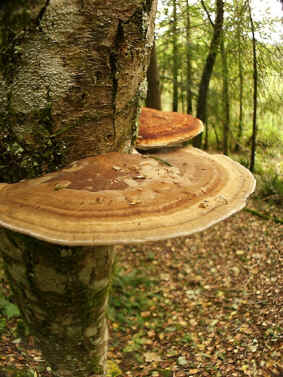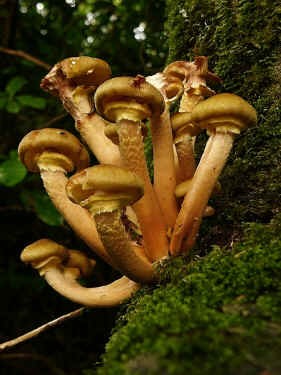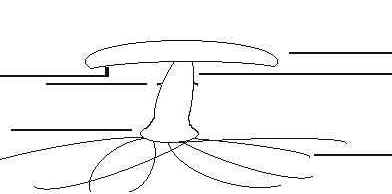| Fungi Activity Sheet |
ALTHOUGH
MANY FUNGI ARE EDIBLE REMEMBER THAT SOME ARE POISONOUS. |
This activity is an introduction to fungi which are organisms that lack the green colouring matter, chlorophyll. Chlorophyll and sunlight are needed for plants to carry out photosynthesis. Photosynthesis is the process by which green plants produce their food. Fungi cannot make their food as green plants do, so they have to absorb their nutrients from living organisms or from the dead remains of plants and animals. Consequently, fungi are not classified as plants. This activity shows the vast variety of fungi by observing the fruiting body, the reproductive structure which is most commonly seen as the mushroom or toadstool.
Particular mushrooms and toadstools are often associated with particular habitats. This is not a coincidence, it is a matter of nutrition. Species grow where they can obtain their special food requirements. As a result, some species are always found with certain types of plant e.g. the Larch Bolete with larch trees and the Fly Agaric with birch trees. This is because the fungi form an association with the plant roots, which benefits both partners. The fungus obtains some nutrients from the plant, while the plant also gains access to other nutrients provided by the fungus.The vast network of fungal hyphae means that the fungus obtains nutrients over a very much wider area than that covered by the plant roots alone. Activity Find a mushroom or toadstool type of fungus. After careful observation, draw it and label the following parts (example). 1) The gills or pores 2) The ring 3) The stem 4) The volva 5) The mycelium
Note that your specimen may not have all the above characteristics. The mycelium is made up of threadlike hypha which is the actual fungus organism. The toadstools or mushrooms commonly seen above ground are just the fruiting bodies or reproductive parts of the fungus. While fungus hunting, you may even find the thick black threads of Honey Fungus beneath the bark of dead or dying trees. These black threads are where very many hyphae have joined together to form rhizomorphs. |


